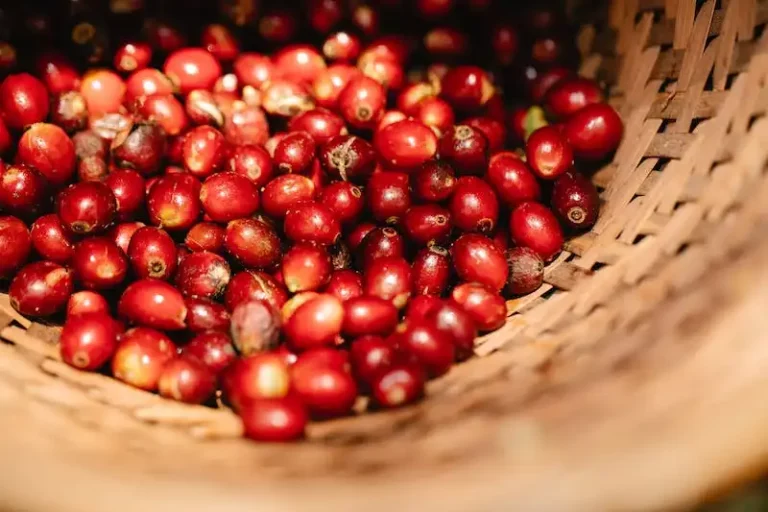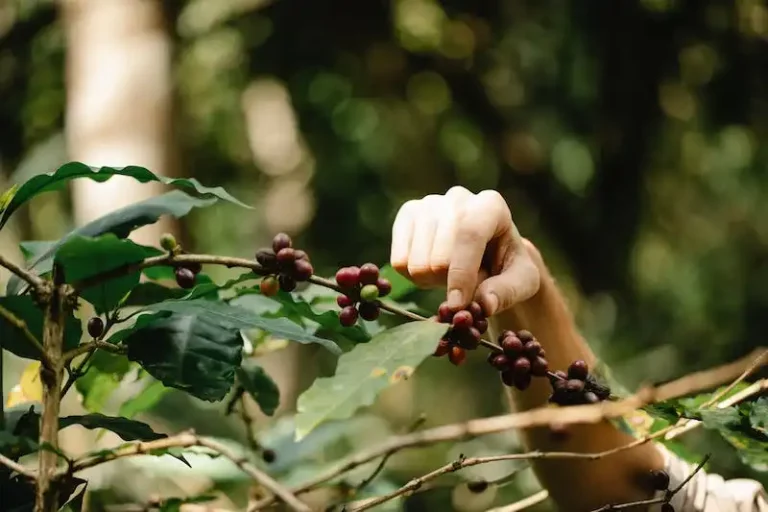If you have a green thumb and want to try your hand at planting some delicious corn, sweet corn is a great choice! In this article, we will cover the basics of growing sweet corn in your garden, including how to choose the best variety and companion plants to help your corn thrive. We will also explain the importance of proper spacing and watering techniques to ensure a bountiful yield of tasty corn!
When choosing a variety of sweet corn, there are a few factors to consider. Sweet corn comes in different types, including heirloom, hybrid, and genetically modified varieties. Heirloom varieties are the original types of corn, known for their exceptional sweetness. Hybrid varieties, on the other hand, are created by cross-pollinating different types of sweet corn to produce specific traits, such as disease resistance or higher yields. Genetically modified varieties have been altered at the molecular level to enhance certain characteristics, such as resistance to pests.
For those new to sweet corn planting, it is always a good idea to read the seed packets for specific instructions regarding germination, spacing, and watering. The information on the packets will also let you know if the seeds need to be tested for germination. If the seeds have been tested, you can be confident that the germination rate will be high. If the information is not provided or if the seeds have not been tested, it is recommended to perform a simple germination test as a precaution.
When planting sweet corn, it is important to space the stalks properly to ensure proper pollination. Corn is wind-pollinated, so it is advised to plant the stalks in blocks rather than single rows. This allows the wind to carry the pollen from one stalk to another more easily. Additionally, planting companion plants such as beans or squash can help attract beneficial insects that will aid in pollination.
While sweet corn is a relatively easy crop to grow, it does require a bit of attention. Watering is crucial, especially during hot and dry periods. Corn requires deep and moist soil, so it is necessary to ensure the roots receive enough moisture. It is generally recommended to water the corn once or twice a week, depending on the weather conditions. To avoid overwatering, it is a good idea to check the soil moisture level before watering. If the soil feels moist to the touch, hold off on watering for a day or two.
By following these basic guidelines and doing a little research, you can enjoy a bountiful harvest of sweet corn. Whether you’re planting for your own enjoyment or sharing with friends and family, growing sweet corn in your garden is a rewarding and delicious experience. So, why not give it a try and enjoy the sweet taste of summer?
Choosing Sweet Corn Varieties
When it comes to growing sweet corn, choosing the right variety is crucial. There are many great types of sweet corn to choose from, each with its own unique characteristics. Here are some important factors to consider when selecting sweet corn varieties:
Maturity: Sweet corn varieties can be classified into three main categories based on their maturity: early, mid-season, and late. Early varieties mature quickly and are great for getting the growing season started. Mid-season varieties strike a balance between earliness and sweetness. Late varieties take the longest to mature but often have the best flavor.
Color: Sweet corn comes in different colors, including yellow, white, and bi-color (a combination of yellow and white kernels). Yellow sweet corn is the most common type and is known for its sweetness and tenderness.
Pollination: Sweet corn relies on proper pollination to develop full ears. Some varieties are easier to pollinate than others. Corn with longer and more abundant silks tend to have better pollination.
Taste: Sweet corn varieties vary in sweetness and flavor. Some have a higher sugar content, while others have a more balanced sweet and savory taste. It’s important to know the taste preferences of your local community to choose a variety that will be well-received.
Disease Resistance: Different sweet corn varieties have varying levels of resistance to common diseases like common rust, northern corn leaf blight, and stalk rot. Consulting a local gardening guide or your extension office can help you select varieties that are resistant to prevalent diseases in your region.
Seeds: When choosing sweet corn seeds, look for packets that have been tested for germination rates. This can help ensure that the seeds you plant will grow into healthy corn plants. Also, check the packet for any specific care instructions or fertilizer recommendations.
Local Experience: It’s always a good idea to talk to local gardeners or farmers in your area to get their input and recommendations on the best sweet corn varieties for your region. They may have valuable insights based on their experience and the specific growing conditions in your area.
By considering these factors and doing some research, you can choose the sweet corn varieties that will best meet your needs and ensure a successful and delicious crop. Happy sweet corn growing!
Sweet Corn
Choosing and growing sweet corn is a popular option for many local vegetable gardeners. It is a versatile plant that can be easily grown from seeds, yielding delicious ears of corn that are packed with sugars. The characteristics of sweet corn plants and stalks vary depending on the seed you choose.
When planting sweet corn, it is important to give the seeds deep, well-drained soil. The stalks of sweet corn grow tall, so they need a wide space to grow. Plant the seeds in rows, leaving enough space between each seed to allow for proper growth. Some sources recommend planting each seed about two weeks apart to ensure a steady harvest of corn throughout the season.
Sweet corn plants need plenty of nitrogen in the soil to grow well, so consider adding fertilizer or compost to enrich the soil. A type of sweet corn seed that sells well is heirloom seed. Heirloom seeds are known for their high germination rate and long shelf life. While growing sweet corn, keep in mind that it isn’t necessary to pollinate the plants yourself. Nature will take care of that for you. However, some gardeners like to plant non-organic corn varieties to ensure full pollination.
When the sweet corn crop is ready to harvest, the ears should be hard and the kernels should be full of sugars. If you don’t want the leaves and stalks, you can simply cut the ears off at the base of the stalk and discard the rest. Sweet corn can be used in a variety of ways, including grilling, boiling, or even eaten raw. It is a versatile crop that can easily be translated into many dishes.
For those who are new to planting sweet corn, there are a few considerations to keep in mind. Sweet corn is a relatively easy plant to grow, but it does require some attention. The seeds should be planted in moist soil to ensure proper germination, and they should be thinned out once they begin to grow. Sweet corn plants are also susceptible to pests and diseases, so it is important to keep an eye on the plants and take action if necessary.
Overall, sweet corn is a delicious and rewarding vegetable to grow in your garden. With proper care and attention, you can enjoy a bountiful harvest of sweet and tasty corn throughout the season. Whether you are a long-time gardener or just starting out, sweet corn is a great addition to any garden.
When it comes to growing sweet corn, there are many resources available to help you. Google and other publications offer a wealth of information on the basics of growing corn, including planting techniques, caring for the plants, and harvesting the crop. With a little research and planning, you can have a successful sweet corn harvest in no time. So don’t wait – start planting your sweet corn seeds today!
Characteristics
In gardening and landscaping, sweet corn (scientific name Zea mays var. rugosa) is a popular crop known for its pliable stalks and wide leaves. It is also a heavy-feeding plant that requires regular watering to ensure proper growth and development. Sweet corn is a warm-season crop that prefers moist soil and full sun, making it suitable for planting in regions with a long growing season.
One of the key characteristics of sweet corn is its pollination process. Unlike other types of corn, sweet corn cultivars are primarily wind-pollinated. This means that their pollen is carried by the wind from the male tassels to the female silks, which are the thread-like structures found at the top of the stalks. To avoid pollination from other corn varieties, gardeners often choose to plant sweet corn at least 200 feet away from other corn crops or separate them by a barrier, such as tall plants or a plastic sheet.
Sweet corn varieties can be classified into two main types: hybrid and heirloom. Hybrid sweet corn varieties are created by cross-pollinating two or more different varieties to produce improved offspring. These varieties are known for their uniformity in growth and good disease resistance.
Heirloom sweet corn varieties, on the other hand, are open-pollinated and have been passed down through generations. They often have distinctive characteristics, such as unusual colors (e.g., white, silver, or green kernels), different flavors, or unique textures. Heirloom varieties require careful selection of seeds to maintain their characteristics and may be more susceptible to pests and diseases compared to hybrid varieties.
When planting sweet corn, it is important to consider factors such as soil quality, spacing, and fertilizers. Sweet corn plants prefer well-drained soil with a pH level between 5.8 and 7.0. The soil should be prepared by tilling to a depth of 6-8 inches and enriched with organic matter or compost. It is also recommended to conduct soil testing to determine the need for additional nutrients and amendments.
Spacing is another crucial consideration when planting sweet corn. Seeds should be spaced about 8-12 inches apart in rows that are 30-36 inches apart. Planting sweet corn too closely together can result in competition for nutrients and hinder growth. Additionally, sweet corn should be planted in blocks or multiple short rows rather than a single long row to enhance pollination.
Gardeners can choose sweet corn varieties based on their preferences and growing conditions. Popular sweet corn varieties include ‘Inglés,’ ‘Silver Queen,’ ‘Florida Sweet,’ and ‘UFIFAS Supersweet 9.’ The choice of variety may depend on factors such as taste, maturity period, disease resistance, and yield potential.
Overall, sweet corn is a versatile and popular crop in the world of gardening and agriculture. Its delicious kernels, unique colors, and easy-to-grow nature make it a great addition to any garden or farm.



